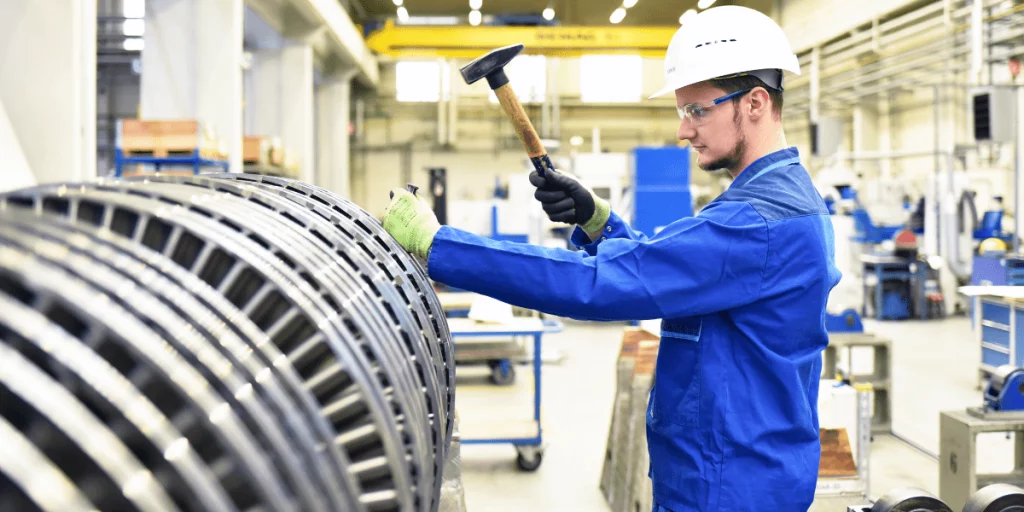Continuous improvement tools and techniques play a huge role in a company’s lean manufacturing journey. That is to say, depending on which tools and techniques they choose to implement, this can lead to reduced errors, improved productivity, and overall, a greater profitability. There are various continuous improvement tools and techniques that can help a manufacturing business reach their lean goals. In today’s blog, we detail five continuous improvement tools and techniques that can increase the performance and safety of the production process, streamline quality control, and optimize value and improve efficiency across the supply chain.
5 Continuous Improvement Tools and Techniques
A manufacturer that has started their lean manufacturing journey has many continuous improvement tools and techniques to choose from. Over the years, these tools and techniques have been designed to help organizations achieve operational efficiency by identifying non-value added activities in their processes, and finding opportunities to improve them. But, with so many options to choose from, how would one know which one is right for their specific business needs? Here’s an overview of the five most used and effective continuous improvement tools and techniques:

1. Gemba Walk
The most valuable resource a company has is its people. After all, how would an operation run without them? In fact, the best and most innovative ideas for improving organizational and operational processes often come from the employees who are working on the shop floor and problem-solving on a daily basis. Lean leaders understand that the best and only way for them to tap into that knowledge is by getting out of their offices and go to the ‘Gemba’ — a Japanese term that means the place where things are really happening.
Gemba walks are informal, casual opportunities for leaders to get a better understanding of what’s happening in the organization. In essence, it involves interacting with frontline employees at the location where they do their work, instead of in a meeting room. So, doing a gemba walk is as simple as the leader going to the shop floor, they observe frontline employees as they perform their day-to-day work, and then they ask questions. As a result, this enables leaders to observe real-life situations or the actual production process so that they have a better sense of the things that are going on.
Gemba walks are one of the most effective continuous improvement tools and techniques for developing better employee relationships. In addition, it is efficient in fostering a culture of continuous improvement within an organization, especially when leveraging a virtual gemba walk. In short, gemba walks provide a framework for continual interaction and create a habit of consistent feedback collection. However, it is important to note that the goal of it is not to evaluate the employee’s performance. Instead, it is used to understand how the work is being performed, what challenges the employees face, and what inefficiencies they see in the processes.
2. 5 Whys
The 5 Whys is one of the best continuous improvement tools and techniques for root cause analysis. By using the 5 Whys, teams practicing continuous improvement can:
- — Move past blaming each other
- — Identify the source of the problem and see beyond the superficial issue
- — Determine potential sustainable solutions to resolve the issue
The 5 Whys is a simple, yet powerful tool that requires nothing, but a pen and piece of paper. It can be completed in just four steps:
- 1. Write down the problem
- 2. Ask why the problem happens
- 3. Write the answer down — another problem will likely appear
- 4. Repeat steps one to three until the root cause of the problem is identified — fewer or more than 5 whys may be required
5 Whys Example
Here is an example used to teach the 5 Whys analysis by Taiichi Ohno, the creator of the 5 Whys technique:
The problem is that the machine stopped working.
- 1. “Why did the machine stop working?”
There was an overload and the fuse blew. - 2. “Why was there an overload?”
The bearing was not sufficiently lubricated. - 3. “Why was the bearing not lubricated?”
The lubrication pump was not pumping sufficiently. - 4. “Why was the lubrication pump not pumping sufficiently?”
The shaft of the pump was worn and rattling. - 5. “Why was the shaft of the pump worn out”?
There was no strainer attached and the metal scraps got in.
By failing to conduct the 5 Whys analysis, a maintenance worker or technician would have just replaced the fuse or pump, and this breakdown would occur again. Additionally, the root cause of the problem was not identified in point five. So, to successfully do so in this case, more whys need to be asked.
What makes the 5 Whys so useful is that it can be used on a large scale too. That is to say, once the root causes of several problems have been identified, a fishbone diagram (aka Ishikawa diagram) can be used to identify complex cause and effect relationships.
3. PDCA Cycle
The PDCA Cycle is one of the most important continuous improvement tools and techniques in manufacturing. It provides a framework for testing different ideas and hypotheses for continuous improvement across an organization. Basically, the PDCA cycle gives frontline teams a four-step guide for carrying out incremental improvement practices. What’s more, it helps prevent them from making recurring mistakes and is commonly used in lean manufacturing. The PDCA Cycle is as follows:
- 1. Plan — define your strategic goal and how you’ll achieve it
- 2. Do — execute your plan and implement any necessary changes
- 3. Check — evaluate the results and document what works and what doesn’t
- 4. Act — make changes and improvements based on the previous step
A notable benefit of the PDCA cycle is that it’s easy to understand and remember. This is because the four-step guide doesn’t require weeks of training and can be summarized in a few minutes. As a result, the acronym can quickly be repeated and used by everyone in the business.
4. 3M's
The 3M’s, also know as the Toyota 3M model, stems from the Toyota Production System (TPS). It refers to three Japanese words that represent different categories of problems that companies experience: Muri, Mura, and Muda. When translated, these words mean:
- 1. Muri = overburden which can be caused by poor planning, lack of resources, or too much waste removal
- 2. Mura = unevenness or irregularities which can be caused by too much waste — this is often the source of Muda
- 3. Muda = waste which is considered as any inefficiencies or non-value adding activities — there are seven types of waste in lean manufacturing
All three categories are connected: by identifying overburden (Muri) in a production process, this helps pinpoint irregularities (Mura), which helps decrease waste (Muda).
The 3M’s is one of the best continuous improvement tools and techniques for identifying problems that also eliminates waste. Essentially, it can help make operations leaner by highlighting issues or opportunities for improvement. Furthermore, the 3M’s is also beneficial for Total Quality Management (TQM) and encouraging the implementation of lean practices that create value for the customer.
5. 5S
5S is one of the most effective continuous improvement tools and techniques for organizing the workplace in the most efficient and effective way possible. It’s designed to help build a physical and mental quality work environment. Moreover, it aims to establish the principles of orderliness, cleanliness, discipline, ownership, and responsibility and pride. 5S is made up of five Japanese terms that translate to:
- 1. Seiri = Sort
- 2. Seiton = Set in order
- 3. Seison = Shine
- 4. Seiketsu = Standardize
- 5. Shitsuke = Sustain
By practicing 5S, businesses can experience advantages such as improved safety, higher equipment availability, better asset utilization, lower defect rates, and improved employee morale.





